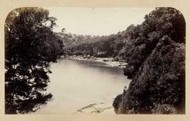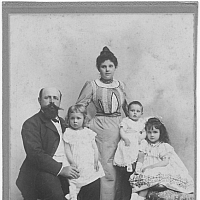
L'Île aux Images - Galerie Sylvain Di Maria 51-53, rue Saint-Louis-en-Ile 75004 Paris France
"Un voyageur est une espèce d'historien; son devoir est de raconter fidèlement ce qu'il a vu ou ce qu'il a entendu dire; il ne doit rien inventer, mais aussi il ne doit rien omettre." (Chateaubriand) "
La photographie a rendu possible un véritable inventaire du monde.
Dès 1850 les voyageurs photographes parcourent et explorent les différents continents avec pour bagage un laboratoire photographique lourd et encombrant.
Les mieux équipés possédaient une charrette entièrement aménagée, tirée par des chevaux, d’autres poussaient une voiture à bras, une sorte de brouette photographique.
Le photographe parcourait à pied en portant chambre, tente, plaques de verre, fioles et autres produits sur son dos.
Inutile d’évoquer cet exploit photographique devant autant de difficultés, la prise de vue et son développement par contact direct reste énigmatique et proche du miracle.
Quelques grands noms tels que Maxime Du Camp en Égypte, Désiré Charnay au Mexique, à Madagascar, à Java, Edouard Joseph Bidault De Glatigné à Aden, en Afrique centrale, Samuel Bourne en Inde, Félix Béato en Chine, au Japon, Félix Teynard, John B.Greene, Théophile Devaria, Francis Frith, Auguste Salzmann et biens d’autres photographes nous ont tous procuré des documents aussi convoités que des œuvres d’art.
Cette photographie du XIXème siècle a su faire vibrer et bouleverser le monde de l’image par ses calotypes, papiers salés, papiers albuminés, papiers ciré sec et son collodion humide.
La découverte de l’instantané par George Eastmann en 1888 va faire basculer le tirage photographique vers un nouveau procédé : les nouvelles émulsions à base de gélatino bromure. Le papier argentique sera utilisé durant tout le XXe siècle.
Photographies :
Eugène Atget, Paul Beer, Antonio Beato,
Félix Bonfils, Farsari, Helsby, Kimbey,
Milton Miller, Skeen ...
Lithographies et affiches :
Paul Colin, Roger Chapelet, F.Crespo, Mich,
Misti, Alphonse Mucha, Toulouse Lautrec...
Sylvain Di Maria
"A traveler is a sort of historian ; his duty is to reliably narrate what he has seen or heard say ; he does not have to invent but he also does not have to omit anything" (Chateaubriand)
Photography has made possible a real inventory of the world
Since 1850, photographers-travelers explore the various continents with heavy and bulky photographical laboratory as luggage. Those who were well-equipped had horse-carts, others man-drawn vehicles, kind of photographical wheelbarrows. The photographer used to walk carrying view camera, tents, plates, bottles and other products.
No need to describe what a tour de force it was considering the difficulties. The shooting and its direct-contact developing remains enigmatic and quasi-miracle.
Great names such as Maxime Du Camp in Egypt, Désiré Charnay in Mexico, Madagascar or Java, Edouard Joseph Bidault De Glatigné in Aden or in Central Africa, Samuel Bourne in India, Felix Beato in China or in Japan, Felix Teynard, John B. Greene, Théophile Devaria, Francis Frith, Auguste Salzmann and many other photographers had all given us documents as wanted as works of art.
This XIXth century photography made the world thrill thanks to its calotypes, salt and albumen papers, dry wax papers and wet plate collodion process.
The discovery of snapshot by George Eastman in 1888 would turn the photography print process into new gelatin bromide emulsions. Argentic paper will be used throughout the XXth century.
Photographs :
Eugène Atget, Paul Beer, Antonio Beato,
Félix Bonfils, Farsari, Helsby, Kimbey,
Milton Miller, Skeen ...
Lithographs and posters :
Paul Colin, Roger Chapelet, F.Crespo, Mich,
Misti, Alphonse Mucha, Toulouse Lautrec ...
Sylvain Di Maria





